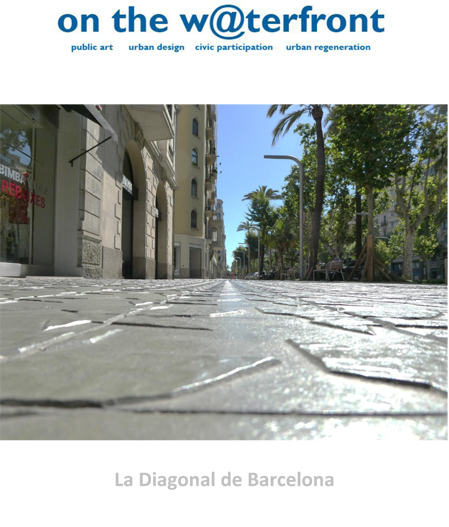Participatory art in public space
Keywords:
Participatory Art, Public Space, Urban Space, Relational Art, Relational Aesthetics, Altermodernism, Site- specific Art, Art-based Research, Practice-lead Research, Practice-based Research, Dialogical Art, New Art Methodologies, Collaborative Art, CommuniAbstract
At the hand of three artistic projects —Suzanne Lacy’s Between the Door and the Street (2013), Lee Mingwei’s The Moving Garden (2009/2015) and Rirkrit Tiravanija’s The Land Foundation— this paper reflects on the methodological precepts underlying theoretical and conceptual foundations of participatory art at the public space.
Taken as case studies about participatory art, each propositions allow to explore relational art / relational aesthetics concepts proposed by the French curator artificer of the Altermodernism, Nicolas Bourriaud, as well as develop and expand this study considering other contemporary debates related to art practice-based research (practice-led research / practice-based research in the arts), widely addressed by Hazel Simth and Roger T. Dean in their book Practice-led Research, Research-led Practice in the Creative Arts (2009).
Collaborative art at the public space proposals implies a dialogue with the audience —relational art before mentioned—, they are based on interaction, socialization and exchange between participants as well as a dialogue with the space itself —site-specific art, that is art designed specifically for a particular location that has a relationship with the place itself—, thus we face with a type of creations of immense creative possibilities and resolutions, which increases the value of the praxis itself.
On the other side, by its own nature, participatory art can not venture prefixing an artistic objectual result because, many times, it gravitates on the actions or activities rather than making objects. Although certain responses and interactions can be predicted, a priori results on the attitudes of the participants can not be given, resulting in an open-ended work. This feature of the "open-ended" does not mean unfinished. We will see that another of the precepts that constitute participatory artistic practices at the public space can hold an open-ended ending of multiple resolutions.
Ultimately, this article searches for define the primary constituent principles of participatory art at the public space in our contemporary world, in order to invite both theorists on the subject and artists to understand it, disseminate it and actively "participate" of it.
Published
How to Cite
Issue
Section
License
The
 licence allows: Share — copy and redistribute the material in any medium or format and Adapt — remix, transform, and build upon the material for any purpose, even commercially.The licensor cannot revoke these freedoms as long as you follow the license terms. Author's rights are protected by the ISSN 1139-7365. On the w@terfront has no restrictions respect the copyright by the authors and does allow authors to retain the publishing rights without restrictions.
licence allows: Share — copy and redistribute the material in any medium or format and Adapt — remix, transform, and build upon the material for any purpose, even commercially.The licensor cannot revoke these freedoms as long as you follow the license terms. Author's rights are protected by the ISSN 1139-7365. On the w@terfront has no restrictions respect the copyright by the authors and does allow authors to retain the publishing rights without restrictions.This journal does not apply any type of charge to the authors for the presentation or processing of the articles.







